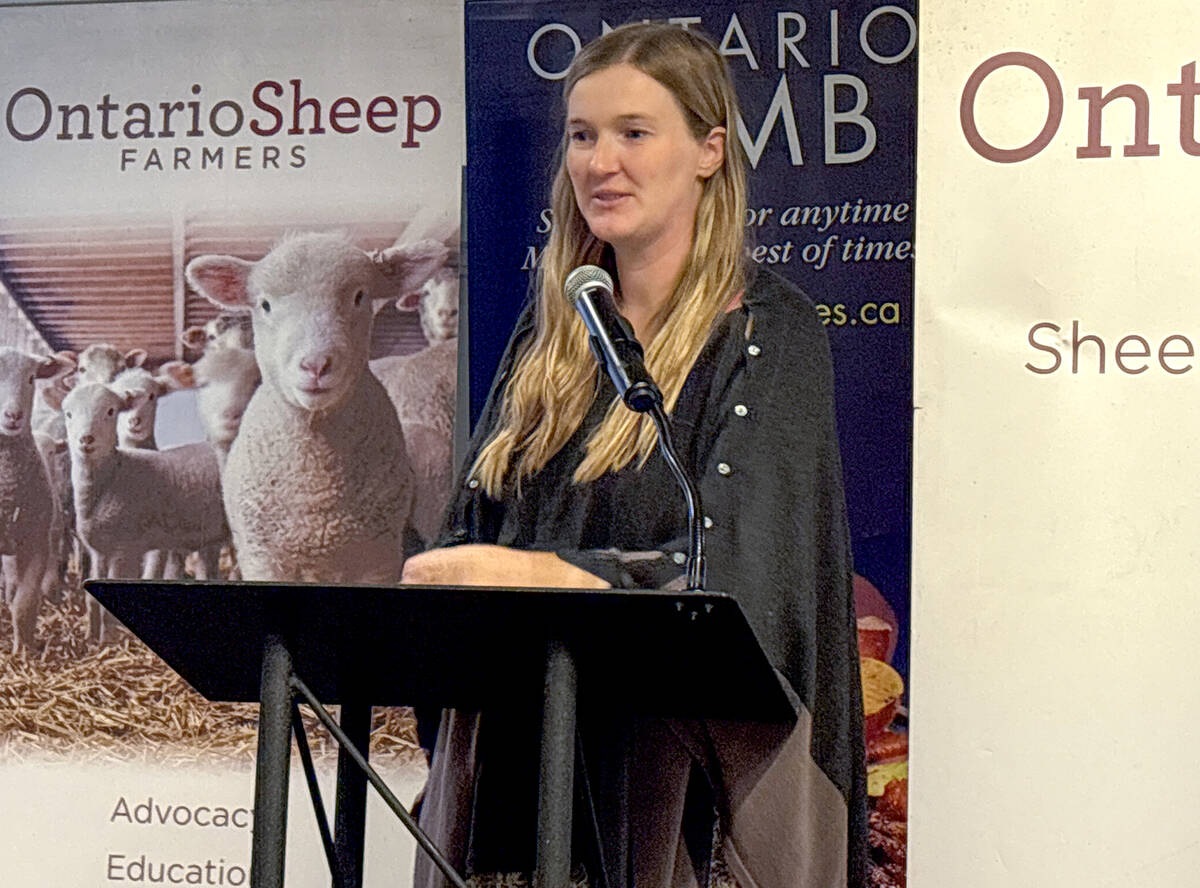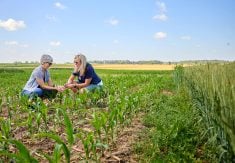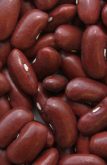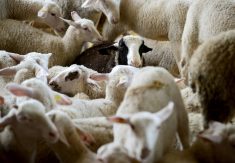The Centre for Meat Innovation and Technology may be Guelph’s best-kept secret.
Tucked away on the University of Guelph campus, CMIT provides training, product and process development, meat science research and technology adoption in collaboration with Meat and Poultry Ontario.
Established in the 1960s, the university’s meat lab was refurbished in 2018 with an extension and installation of pig, beef, goat and lamb processing equipment and is the only academic facility with a CFIA establishment number.
Read Also

Footflats Farm recognized with Ontario Sheep Farmers’ DLF Pasture Award
Gayla Bonham-Carter and Scott Bade, of Footflats Farm, win the Ontario Sheep Farmers’ 2025 DLF Ontario Pasture Award for their pasture management and strategies to maximize production per acre.
It has a harvest floor, meat cutting room, ready-to-eat processing room and several research labs.
Why it matters: The centre provides small- and mid-sized processors with facilities to address challenges such as training and product testing.
Centre director Luis Garcia said its mandate is to advance and strengthen the Canadian meat processing industry through collaboration and innovation, showcase leading-edge technologies and support technology adoption.
For example, it can take a live carcass down to a finished ready-cooked product on site. That includes smoked products, using an industrial SCOTT Smokehouse produced in Guelph.
“We call up our recipe. Whether it’s bacon or a kielbasa, it’s already pre-programmed,” said meat science lab manager Gino Giansante. “Once we load it up, hit the green arrow, and she does her thing. When it’s done, she rings, and we pull it out.”
The smoker uses liquid smoke or wood, but Giansante said hardwood is preferred to create a full, rounded taste. Finished products are stored in the cooler, with items available for bulk sale.
“We do have an employee market that we share with the university,” he said, adding brisket, steaks and stewing beef are favourites.
To address the meat and poultry processing labour shortage, CMIT offers a range of abattoir and meat processing-specific courses like knife skills, sausage making, cleaning and sanitation, and the Cuomo method for meat curing and maturing.
“We had students up on top watching the slaughter to give them an observational understanding of what happens,” said Giansante.
“It was amazing. I had 30 students on that top deck; you could hear a pin drop down here. They were just so focused.”
The meat lab’s collaboration with students extends from providing material for animal research to a research kitchen off the processing room.
That’s where U of G students look at bite, tenderness and what happens to animal proteins during meat aging.
“We’re working on a pretty neat project right now with dairy cows,” said Giansante.
Typically, dairy cows go to the grinder, but in this project, animals are put on pasture for 30, 60 and 90 days to see if meat quality is improved. Initial data is positive, but questions remain on whether that improvement justifies the extra time and expense incurred by the farmer.
The students are also testing a feed program to see if growth increases can get a steer to market earlier without adverse side effects.
The centre maintains carcass traceability throughout the killing process through iCap, a plant-floor food processing software that integrates with radio frequency identification tag wands.
“You can track every piece of meat that came off the carcass from this farm (with) this RFID number,” said Betty-Jo Almond, general manager of AgSights, a producer cooperative that provides animal tracking and traceability services.
“Then, with BioTrack, you can find out all the data you collected while raising that animal.”
Mike Buis, a Chatham-Kent beef producer, used the iCap/BioTrack system to pinpoint an outlier cut of beef with less-than-optimal tenderness from his farm. The animal in question had pneumonia at weaning and the long-term impact was realized at harvest, said Buis.
“We’re seeing the detrimental effects of how that significant stress in the animal’s lifetime has affected his tenderness,” said Buis. “That was really good data to have back. Because we had the full traceability, we knew all the details.”
Buis uses BioTrack and BioLink data to extrapolate higher value cuts, such as ribeye, and earmark them for his shop.
After years of data collection, Buis said there is a premium paid for tenderness, marbling and ribeye but deductions for backfat, so he knows what’s at risk if he over-finishes an animal. He also selects bulls with proven rapid growth and good carcass attributes for tenderness, marbling and ribeye.
After 30 days on a finishing ration, Buis weighs his animals and performs a chute-side ultrasound. The computer uses ultrasound information and weight to project an animal’s growth curve, marbling and back fat and set an optimal harvest date.
Giansante said the centre’s CFIA certification allows it to work with feedlots, dairy farms, beef farms and a local pig farm because domestic and international sales are possible without issue.
Typically, the abattoir processes four to six beef animals, 10 pigs and 20 to 40 small ruminants from Monday through Thursday.
It focuses on serving smaller farms who struggle to access processing, said Giansante, and usually book a week or so in advance. Summer is busier with beef projects, but from the end of August to March, Giansante said it is flexible.
The challenge for the uninitiated is simply finding the lab.
“We keep it so low key, in fact, that I’ve had CFIA inspectors who were students here that didn’t know it existed until they came back as CFIA inspectors,” he said with a laugh.















